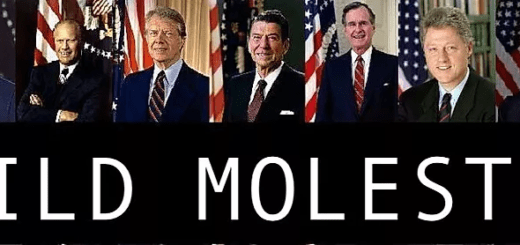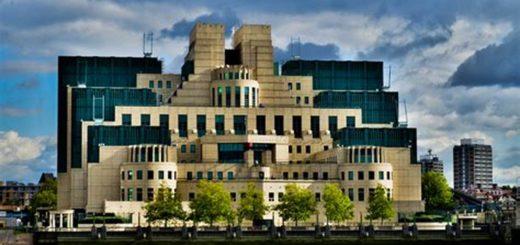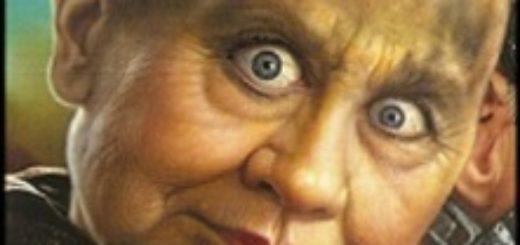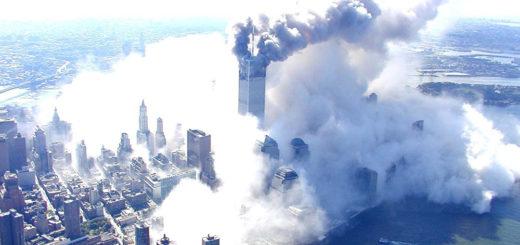As a cleric with many years of study, experience and knowledge in this area,
I am alarmed and dismayed by statistics that confirm that Wisconsin is the
nation’s most Satanic state. There are more Satanic cults in Wisconsin per
capita than any state in this great land of ours. Here are the facts as
shown in government reports:
Wisconsin has over 87,000 practicing Satanists; this is more than all those
in California, Texas and New York combined.
Wisconsin has 297 Satanic covens. That is more than the entire continent of
Europe.
Wisconsin was home to serial killers Jeffrey Dahmer, Ed Gein and Charles
Manson. This is due to the Satanic influences of
Wisconsin cults.
Wisconsin habitually lets pedophiles out to prey on more children. Examples
include the Spanbauer and the Gerald Turner Halloween Killer cases. This is
caused by the Satanic influence of devil-worship cults over the Madison
liberal clique. It is these liberals that support the pedophiles and
Satanists. The Wisconsin Parole board is mostly Madison liberals.
The mark of the beast ‘666’ is often scrawled in Wisconsin on hidden places
in Wisconsin wooded areas and in Wisconsin schools.
Wisconsin is slow to ban Satanic cult influences over the liberal, corporate
media. That is why television channels show nudity and Satanic violence on
Wisconsin airwaves. Most Wisconsin people are addicted to these Satanic
television shows, even if they are not Satanists.
Wisconsin people have turned away from the Lutheran Church and toward
liberal secular humanist atheist and Satanic philosophy. Scientific,
Islamic and atheist beliefs are taught in Wisconsin schools in order to aid
the Satanists. Evolution and the Big Bang are the most notorious of these
beliefs. Christian beliefs, like the Ten Commandments are banned from the
schools and are mocked on Wisconsin tv shows like Howard Stern.
To fix this, you must contact your legislator to help get an official ban on
Satanic groups. Satanists should be jailed and given psychiatric treatments
to render them harmless to the decent, conservative Wisconsin majority. You
should vote Republican on all issues to limit the influence of the atheist,
liberal Satanists. You should fight against corporations because
corporations support Satanic content on the television airwaves. Police and
other law enforcement agencies must be warned to watch for the activities of
Satanists, especially, in caves and wooded areas. Non-Judeo-Christian
religions, such as Islam, must be monitored for signs of Satanic activities.
Nazi and KKK groups have Satanic and occult origins; these groups must be
monitored for Satanic activities. Liberal political groups must be watched;
Stalin was strongly influenced by these liberal groups.
Together, we can reverse the pro-Satanic activities that have taken hold in
Wisconsin. By exercising Christian vigilance, Wisconsin can be God’s
country once again.
The Lord be with you,
Pastor J. Lindsvolde
Contemporary religious Satanism is predominantly an American phenomenon, the ideas spreading elsewhere with the effects of globalization and the Internet.[3] The Internet spreads awareness of other Satanists, and is also the main battleground for Satanist disputes.[3] Satanism started to reach Central and Eastern Europe in the 1990s, in time with the fall of the Soviet Union, and most noticeably in Poland and Lithuania, predominantly Roman Catholic countries.[4][5] (From Wikipedia)
Wisconsin German
Jump to navigationJump to search
| Wisconsin German | |
|---|---|
|
Native speakers
|
36,443 (2013) |
|
Indo-European
|
|
| Language codes | |
| ISO 639-3 | – |
| Languages | |
|---|---|
| English, Wisconsin High German, Low German, Kölsch, Swiss German, Luxembourgish |
The term Wisconsin German refers to both Wisconsin High German and to heritage dialects of German spoken in Wisconsin.[1]:5 By 1853 a third of Wisconsin’s population was coming from German-speaking lands; by the end of the 19th Century, Wisconsin’s largest minority of non-English speakers were German speakers.[2]:37 Unlike other heritage languages, which tend to become moribund by the third generation, Wisconsin German speakers have maintained their heritage language(s) alongside English for multiple generations,[1]:5 from the 1840s to well until the mid-20th century. This is due in part to their immigration patterns: the German immigrants tended to settle within ethnically homogeneous (or similar) communities,[3][4] with similar linguistic, cultural, and geographic backgrounds.[1][4]:119–120 Additionally, the maintenance of the language was supported by German being taught and used in many local churches, schools, and the press.[3] While Wisconsin German retains many standard and/or dialectal features of German, it has not only incorporated some linguistic elements of English, but also developed unique and innovative (morphosyntactic,[1] syntactic,[5] lexical[6]) characteristics of its own. By the early mid-20th century, social, political and economic factors, such as urbanisation, contributed to a general shift from German to English[citation needed].[4]
Contents
[hide]
History[edit]
By the mid-19th century, many German immigrants had settled in Wisconsin[3]:26 and by the latter half of the 1800s German speakers had chosen Wisconsin over other American states as their destination.[7]:45 This was partly because of the state’s resources, available land, and the entrepreneurship of land agents,[8] but also because these immigrants were seeking new economic opportunities, and religious or political freedom.[9]
The Wisconsin city of Freistadt, for example, was founded by 300 German Lutherans from Pomerania, who were escaping Prussian religious reform and persecution.[9]:347–48 They called their colony Freistadt, or “free city”, most likely to commemorate their newfound religious freedom in the Americas.[9]:348 Both their faith and maintenance of their East Pomeranian dialect were important to the Freistadters: although the city was founded in 1839, there were still East Pomeranian speakers in the Freistadt well into the end of the 20th century[citation needed].
Wisconsin High German and dialects[edit]
These German speakers were from many different regions and states, such as Mecklenburg-Schwerin, Pomerania, Posen, Rhineland, Westphalia, Switzerland,[10] Bavaria, Luxembourg, Baden, Saxony, Hesse, Württemberg, and Austria.[9] Each group brought its own dialect, which it continued to use in the home, community and even in local Wisconsin businesses.[3]:27–28
In addition, a form of Wisconsin High German, a koiné of Standard Germanwith dialectal features,[1] was used parallel to the community’s dialect, such as in churches, and elementary and secondary schools; this meant that many Wisconsinites were trilingual, speaking their heritage dialect, Wisconsin High German and English.[11] The extended multilingual contact over multiple generations of Wisconsin German heritage speakers, has resulted in the development of a language that not only contains features of their ancestral dialect, standard German and English,[citation needed] but also developed new linguistic features of its own.
Language maintenance[edit]
Schools[edit]
For the early German settlers, German, not English, was the predominant language used in schools in rural Wisconsin (Petty).[2]:42 Teachers were hired from Germany, German textbooks were at first imported, then later printed in the US. By 1854, the Wisconsin State Law declared that all major subjects were to be taught in English (Petty);[2]:42however the state had little authority over local schools, which were locally governed and financed (Petty).[2]:42 Schools fully switched to English by the early 20th century, which partially contributed to the gradual decline of German heritage speakers[citation needed].
Grammar[edit]
Previously, researchers have looked at heritage languages to study incomplete acquisition or L1 attrition (Polinsky, 1995; Sorace 2004; Montreal 2008)[citation needed], yet speakers of Wisconsin German do not fit into either of those categories.[1]:2 Modern Wisconsin Heritage German speakers have grown up speaking German in the home, and often only learned English upon entering school, around the age of 6.[1]:2 This means that their German, including grammatical features such as dative, would have already been acquired,[1][12] if it existed in the speakers’ heritage language.
Morphosyntax[edit]
One difference between Wisconsin Heritage German and Standard German and its ancestral dialects are changes in its case marking system, such as the loss of the dative case.[1] In Germany, there exists variation among its different dialects: for instance, in the Rhenish Hesse region, one can still find a three-case marking system (nominative, accusative, dative); in the Eifel, a two-case system; and in the Low German dialectal regions, a single case system.[1]However, in Wisconsin German, while heritage speakers appear to no longer show use of the dative case, they have developed new morphosyntactic features. Across different dialects, heritage speakers have begun marking case in same or similar ways:[1]:6 in some cases, their Differential Object Marking (DOM) would align with Standard German morphology; in other cases, speakers appear to have restructured and reanalysed the DOM to create a new semantic-morphosyntactic system.[1]:6 For example, Yager et al. (2015) cite the following examples to illustrate this phenomenon:[1]:2
| Wisconsin Heritage German (WHG) | Standard German (SG) | ||||||
|---|---|---|---|---|---|---|---|
| Example 1: Standard-like dative | im | Boom | im | Baum | |||
| in the-Dative | tree | in the-Dative | tree | ||||
| Example 2: Accusative for SG dative | von ein | Dorf | von einem | Dorf | |||
| from a-Nominative/Acc | village | from a-Dative | village | ||||
| Example 3: Innovative marking | es war | in den | Haus | es war | im | Haus | |
| It was | in the-Accusative | house | It was | in the-Dative | house | ||
Example 1 shows that Wisconsin German still contains some instances of dative.[1]
In Example 2 a neuter indefinite article has been selected; however it is unclear if it is in the nominative or accusative case. This is a departure from Standard German, where a dative neuter article (“einem”) would be used. This is an example of a restructuring of the DOM in Wisconsin German.
Example 3 illustrates innovative case marking: instead of a dative neuter definite article (“dem”), a distinctly masculine accusative definite article has been selected.[1] Heritage speakers could have selected a nominative (“das”), accusative (“das”) or dative article (“dem”), but instead not only select an accusative marking but also a masculine article.
It is interesting to note that this pattern has appeared not only with a single group of heritage speakers, but rather can be found in speakers of different German dialects (such as the Rhenish Hesse, Eifel, and Low German dialects).[1]
Documentation[edit]
One of the first recordings of Wisconsin German dialects was made in the 1940s by Lester “Smoky” Seifert, a professor of German at the University of Wisconsin–Madison. Seifert, an East Low German speaker, recorded over 100 written interviews with Wisconsin German speakers, in which he included both linguistic and cultural questions.[7]:55
My Comment: The Answer to all of this evil is Jesus Christ & Exorcisms.
The Second Coming of Christ is Very Near.








 Who Is Controlling RFK Jr.? | Candace Owens
Who Is Controlling RFK Jr.? | Candace Owens









2 Responses
[…] Wisconsin Is Hotbed of Satanism […]
… [Trackback]
[…] Read More Infos here: brutalproof.net/2018/06/wisconsin-is-hotbed-of-satanism/ […]